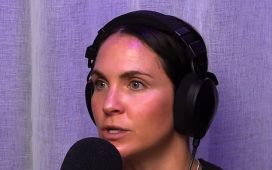Boris Johnson, Britain’s new prime minister, will need to boost the living standards of nearly 7m people who live on persistently low incomes if he is to revive “left-behind communities”, according to data using the government’s new experimental poverty measure.
In a report published on Monday, the Social Metrics Commission, a group of experts from across the political spectrum, said 4.5m people live on incomes less than half the poverty line, set at 60 per cent of the UK’s average annual income of £28,400.
The larger 7m figure represents the people whose incomes fall below that mark for three consecutive years.
Philippa Stroud, chair of the commission who also leads the Legatum Institute, said: “Boris talks about levelling up and the left-behind people — if he’s serious, these are the people he needs to target for support.”
The commission, which persuaded the government this year to publish this new poverty measure, said the data highlight the task facing Mr Johnson, who pledged in a speech on the steps of Downing Street last week to “answer the plea of the forgotten people and the left-behind towns”.
The report uses the latest data for 2017-18 to measure poverty on its new measure.
The government has pledged to publish official statistics on this new measure, but does not have a target for reducing poverty levels.
The technique used by the Social Metrics Commission did not change the overall measured level of relative poverty, but altered the methodology to take better account of unavoidable costs people face, such as dealing with disabilities or childcare.
It noted that there were 14.3m people living in poverty on its measure, about the same number as in 2000 and with stability in overall numbers also seen in recent years.
Almost half of this number lived in the same household as someone who was disabled and the vast majority of people were of working age because the social security system is much more generous to poor people of retirement age.
Baroness Stroud said there was now a need to look at those with the most difficult lives, including families with incomes only half the poverty line “who seem to be missing out on everything” and those persistently poor.
Those who were measured as having extremely low incomes were also more likely to be poor for a long time, the research showed. About 60 per cent of people who lived in households with incomes only half the poverty line had low incomes consecutively for the past three years compared with only 36 per cent for those living within 5 per cent of the line.
Poverty rates for children had increased in recent years, offsetting a decline in pensioner poverty.
The report came as another think-tank, the Resolution Foundation, said that raising minimum wages had not pushed people into poverty-pay self employment.
Alison Garnham, chief executive of Child Poverty Action Group, said the figures showed that “no matter how you look at it, child poverty is rising and it should be an urgent priority for the new prime minister”.
Calling for the government to scrap the two-child limit for social security payments and restoring working-age benefits to their real terms level in 2015, she said, would lift 700,000 children out of poverty. “Investing in children is an important first step for a government that wants to reunite the country.”












